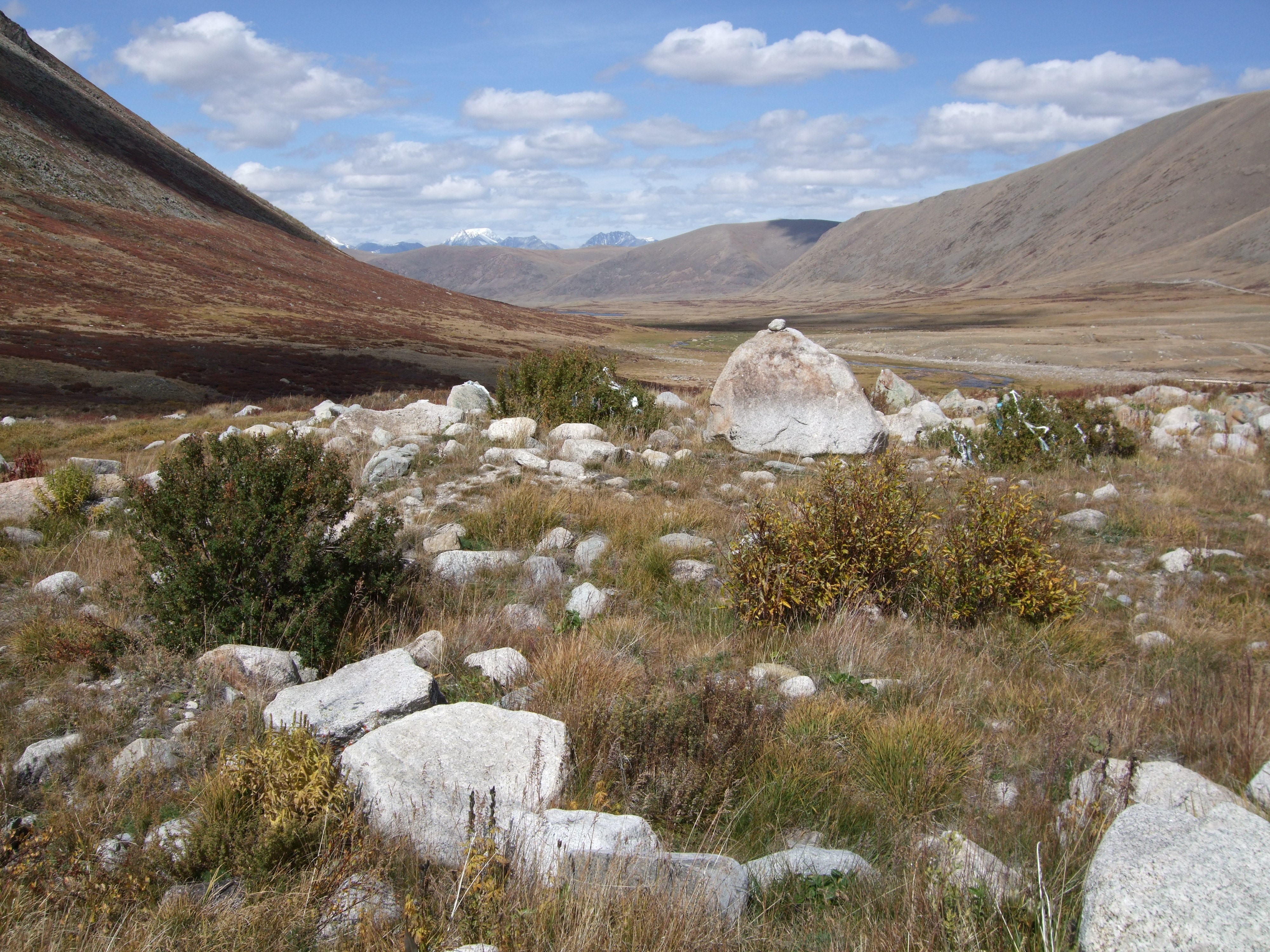|
|
Institute of Ethnology and Anthropology, Russian Academy of Sciences,
Svetlana Tyukhteneva
|
The Telengits. The Surrounding Society and the Main Economic Activity of the Region
The Altai Republic is located in the very south of Western Siberia, on the border of the Russian Federation with Kazakhstan, China, and Mongolia. The total length of the borders is 860.4 km. The border with Mongolia is 288.7 km, with China - 54.1 km, and with Kazakhstan - 517.6 km. The Republic also has internal borders with such constituent entities of the Russian Federation as Tyva in the east, Khakassia in the northeast, Kemerovo region in the north and the northwest, and the Altai Territory in the west.

Altai is located between 48º and 53º N and 82º and 90º E, representing the extreme western reach of the mountain system of Southern Siberia. The territory of the Altai Republic is 92.9 thousand square km, extending over 350 km from north to south and 400 km from east to west. Around 97% of the region is mountainous. The highest point in Siberia is Mount Belukha, 4506 m above sea level. The mountain-taiga landscape accounts for the fact that cattle breeding provides a significant share of agricultural production, 87% of the total, in fact. Agricultural lands occupy 43.5% of the total area of farmlands or 12.3% of the land fund, of which arable land occupies 133.5 thousand hectares; pastures - 919.6 thousand hectares; hayfields - 93.7 thousand hectares; perennial plantings - 0.5 thousand hectares; leyland - 2.2 thousand hectares. Crop farming in the region primarily centers on the production of food for livestock, and therefore the majority of the cultivated area (90%) is occupied by feed crops. In addition, 23% of the Republic’s area is natural preserves at the federal and regional level, and some enjoy the national and international (i.e., UNESCO) status. The total area of the Republic is 92.903 thousand square km.

In 2022, the total population of the Altai Republic was 221.402 persons (as of January 1, 2022). Of these, 64.547 (29.2%) are city residents and 156.855 (70.8%) are villagers. The Altai Republic ranks first in terms of the number of villagers among the six predominantly rural regions of Russia.
The Ulagansky district is home to such industries as the extraction of non-ferrous metals, logging, wood processing, beef cattle breeding, goat breeding, sheep breeding, horse breeding (including the local breed of flea-bitten horses), gardening (Chelushmanskaya Valley), and collection of medicinal and technical raw materials. The district ranks second in the Republic in the production of goat down. In Soviet times, the now closed Aktash Mining and Metallurgical Enterprise was the only factory producing metallic mercury in Russia.
The landscape of the region determined the possibilities of conducting a particular type of business, thus forming a map of the settlement of the prevalent nationalities. The south, southeast, and west of the Altai Republic are predominantly inhabited by the Altaians, including the Telengits, and the Kazakhs, who specialize in cattle breeding. The south of the Republic specializes in cattle breeding, deer breeding, logging, mining, and some gardening industries. In accordance with the specialization of the regions, the population of the Republic works in logging, wood processing, food, mining, and consumer goods industries.
























































